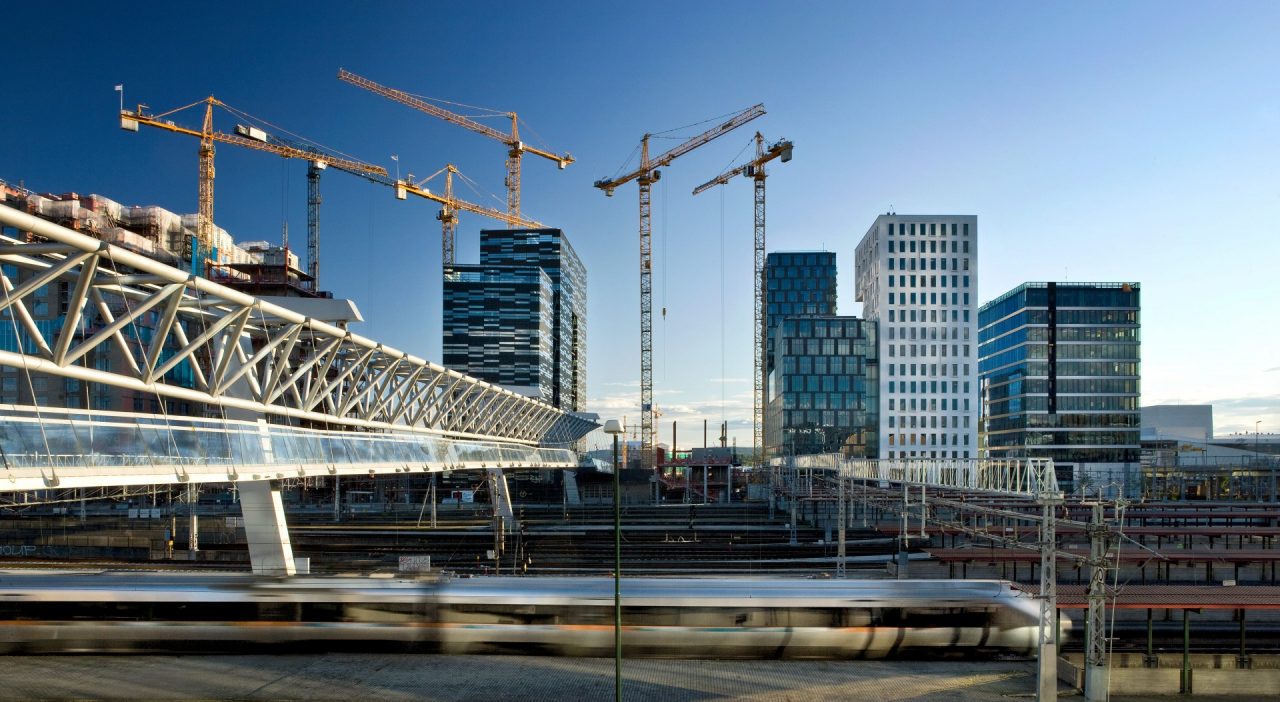In Oslo, considered one of Europe’s “greenest” capital cities, the battle against traffic congestion is a top priority.
Clinging to the banks of a spectacular fjord, surrounded by mountains and green hills, and scattered over 40 islands, Oslo aims for continued urban growth without betraying its nature-oriented vocation. While the population has already climbed to one million, a growth trend suggests that by 2025 some 300,000 additional people will reside in the greater Oslo region, creating an increased demand for infrastructure, particularly roads and railways.
To work toward meeting the heightened mobility demands, a major infrastructure project has been underway for years. An approximately 23-kilometer-long (14-mile-long) railway line will divide the city in two via its underground route.
The line running under Oslo
The Follo Line Railway is the Norwegian capital’s newest wonder: a high-speed underground rail line to transport travelers quickly between Oslo and the city of Ski. It has been called the country’s largest transportation project.
The line is designed to relieve surface traffic congestion while also connecting populated areas near the capital. Once operative, travel time on the route will be halved from 22 to 11 minutes. Work is expected to be completed by the end of 2022.
Part of the InterCity development southeast of Oslo, the new line will allow for a 63% increase in rush hour transport capacity.
Two parallel “Blix Tunnels” running underground are to thank for this. Four Tunnel Boring Machines (TBM) were used to carry out the excavations. Each was named after an important woman from Norwegian history: “Queen Ellisiv”, for the wife of King Harald III of Norway; “Anna”, inspired by a famous 1950s merchant; “Magda”, in memory of Magda Flåtestad, who transported the faithful from one side of Lake Gjersjøen to the church in Svartskog.
These four TBMs have excavated the Oslo underground, giving rise to Norway’s longest railway tunnel. Trains will speed through at 250 km/h (155 miles per hour).

The impact of a strategic work on the city
The vitality of an urban area, along with its plans for growth, development, and economic attraction, can be measured in part by its mobility systems. When designed to be sustainable, mobility becomes evidence of a city’s capacity for innovation as well as a formidable tool for enhancing economic strength. The Follo Line project is a clear example. Trains crossing Oslo daily along that route will increase from the current 12 to 40. Local and freight trains will continue to run along the Østfold Line, while regional and fast trains will move along the Follo Line railways.
Along the same corridor, the new line will facilitate 11,000 more trips per day than the current setup, with an average increase in frequency of 43% and up to 67% at peak times.
Notably, the new line will amount to a daily reduction of 5,800 car trips, equal to 5.4 million tons of Co2.
The future of Oslo, sustainable mobility, and the green revolution
The construction of the city’s underground railway tunnel is just the most recent in a long line of infrastructure developments in Oslo since the 1980s. It is part of the Norwegian National Rail Administration’s (now Bane NOR) plan to build three major urban corridors, thus shifting the lion’s share of city movement to rail transport. The first corridor, the Gardemoen Line, was completed in 1998; the second, the Asker Line, in 2011; and between 1989 and 1996, the existing railway line connecting the towns of Ski and Moss was doubled. The Follo Line is the newest and is also equipped for freight transport, and can therefore take the equivalent of 750 trucks per day off the road.
Accelerating the city’s growth through transport of people and goods is still a key objective of the local government and of Bane NOR. The latter has announced a goal of tripling the amount of goods transported by rail in the country by 2040.
High-speed lines will play a decisive role in conquering this challenge. These lines are the only tool that can cut down on time, decrease pollution, and facilitate movement for millions of people.

